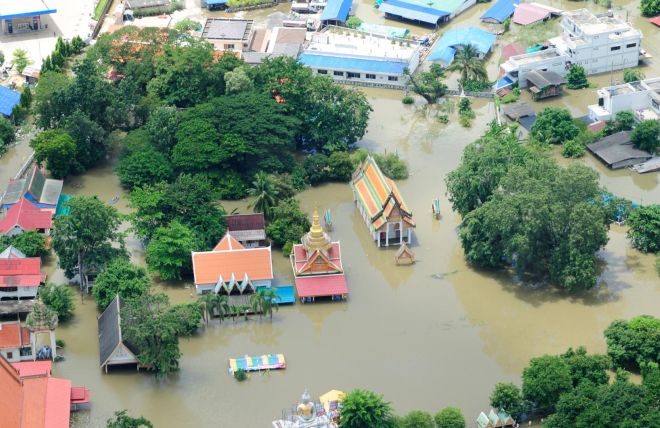As hurricane season approaches, homeowners’ associations (HOAs) must take proactive steps to safeguard their communities. Proper hurricane preparedness not only minimizes property damage but also protects the lives of residents. Here’s a step-by-step guide to help your HOA prepare for hurricanes and ensure the safety and security of your community.
1. Conduct a Risk Assessment and Identify Vulnerabilities
Before making any hurricane preparations, your HOA should assess potential vulnerabilities within the community. This involves evaluating structures, landscaping, drainage systems, and other infrastructure that could be impacted by high winds and heavy rainfall. A thorough risk assessment generally includes five key points:
- Identify Hazards: Determine the potential threats specific to your area, such as flooding, high winds, and structural damage.
- Analyze Vulnerabilities: Identify which parts of your community are most at risk, whether it’s homes near water sources or older buildings.
- Assess Impact: Understand how these hazards can impact your community, including potential costs, safety risks, and recovery time.
- Determine Likelihood: Consider how frequently hurricanes or related hazards might occur in your area.
- Prioritize Risks: Rank the risks based on their likelihood and potential impact to determine where to focus your preparedness efforts.
Understanding these five points allows your HOA to develop a targeted and effective hurricane Emergency Plans.
2. Understand What Makes Hurricanes Form
Knowing the factors that contribute to hurricane formation helps in understanding the severity of these storms. There are five main factors needed for a hurricane to form:
- Warm Ocean Water: Temperatures of at least 80°F are needed to fuel the storm.
- Low Wind Shear: Minimal differences in wind speed and direction at different altitudes allow the storm to strengthen.
- Moist Air: High humidity in the atmosphere helps sustain storm clouds and rain bands.
- Pre-existing Disturbance: A low-pressure system is necessary to kickstart the process.
- Coriolis Effect: The Earth's rotation helps the storm spin and grow into a powerful system.
These conditions typically occur during late summer and early fall, when ocean temperatures are at their warmest.
3. Use the Risk Matrix for Hurricanes
A risk matrix is a valuable tool that helps communities prioritize risks based on their likelihood and impact. For hurricanes, the matrix typically measures:
- Likelihood: How probable is it that a hurricane will occur in your area?
- Impact: How severe would the damage be if a hurricane hit your community?
In the risk matrix, each risk is placed in one of four quadrants:
- Low Likelihood, Low Impact: Minimal focus needed.
- Low Likelihood, High Impact: Prepare in case it happens, despite its rarity.
- High Likelihood, Low Impact: Regular but manageable risks.
- High Likelihood, High Impact: Top priority for your HOA’s disaster planning.
Using this matrix allows your HOA to focus resources effectively on the most pressing risks.
4. Leverage the FEMA Risk Assessment Tool
FEMA offers a powerful risk assessment tool called the Hazard Mitigation Planning and Risk Assessment Tool. This tool helps communities analyze potential hazards and understand their impacts, guiding decisions on where to strengthen disaster resilience. The tool allows you to input data about your community’s geography, infrastructure, and historical disaster occurrences, offering a tailored risk profile that aids in disaster planning. For more information, visit FEMA’s Hazard Mitigation Planning resource.
5. Secure Your Community’s Property
Hurricanes can cause severe damage to both individual homes and shared community spaces. Take steps to secure common areas by trimming trees, securing loose objects, and reinforcing structures. Encourage residents to prepare their homes by installing storm shutters, reinforcing garage doors, and securing outdoor furniture. Your HOA should also arrange for regular inspections of roofs, windows, and drainage systems to ensure they are in good condition before a storm.
For more information on flood insurance, visit FloodSmart.gov.
6. Plan for Post-Storm Recovery
Recovery doesn’t begin after the storm ends—it begins with your preparation. Your Hurricane Preparedness plan should include detailed steps for post-storm recovery, such as damage assessments, debris removal, and coordinating with insurance providers. Establish a process for residents to report damage and request assistance. Consider setting up a central hub where residents can receive HOA Communication During and After a Natural Disaster
Preparing for hurricanes is a shared responsibility that requires coordination, planning, and proactive measures from both the HOA and residents. By following these steps and utilizing resources like the FEMA risk assessment tool and risk matrix, your community can reduce the impact of hurricanes and ensure a faster recovery. Remember, the time to prepare is now—before a storm is on the horizon.For more insights on disaster preparedness, read our overarching guide on Disaster Readiness for HOAs.
Sources
-
Federal Emergency Management Agency. (2024, March). Wildfire hazard information sheet. Ready.gov. https://www.ready.gov/sites/default/files/2024-03/ready.gov_wildfire_hazard-info-sheet.pdf
-
Federal Emergency Management Agency. (n.d.). Wildfire. FEMA. https://community.fema.gov/ProtectiveActions/s/article/Wildfire
-
Arrowsmith, L. (2023, August 7). Natural disaster statistics 2023. Forbes. https://www.forbes.com/advisor/homeowners-insurance/natural-disaster-statistics/
-
The Zebra. (2023). Natural disaster statistics for 2023. https://www.thezebra.com/resources/research/natural-disaster-statistics/
-
Specialty Fuel Services. (n.d.). Natural disaster statistics. https://specialtyfuelservices.com/natural-disaster-statistics/
-
Statista. (n.d.). Natural disasters. https://www.statista.com/topics/2155/natural-disasters/
-
National Weather Service. (n.d.). Hazardous weather statistics. https://www.weather.gov/hazstat/
-
Statista. (n.d.). Natural disasters. https://www.statista.com/topics/1714/natural-disasters/
-
Ritchie, H., & Roser, M. (2014). Natural disasters. Our World in Data. https://ourworldindata.org/natural-disasters
-
National Centers for Environmental Information. (n.d.). Billion-dollar weather and climate disasters: Summary stats. NOAA. https://www.ncei.noaa.gov/access/billions/summary-stats







